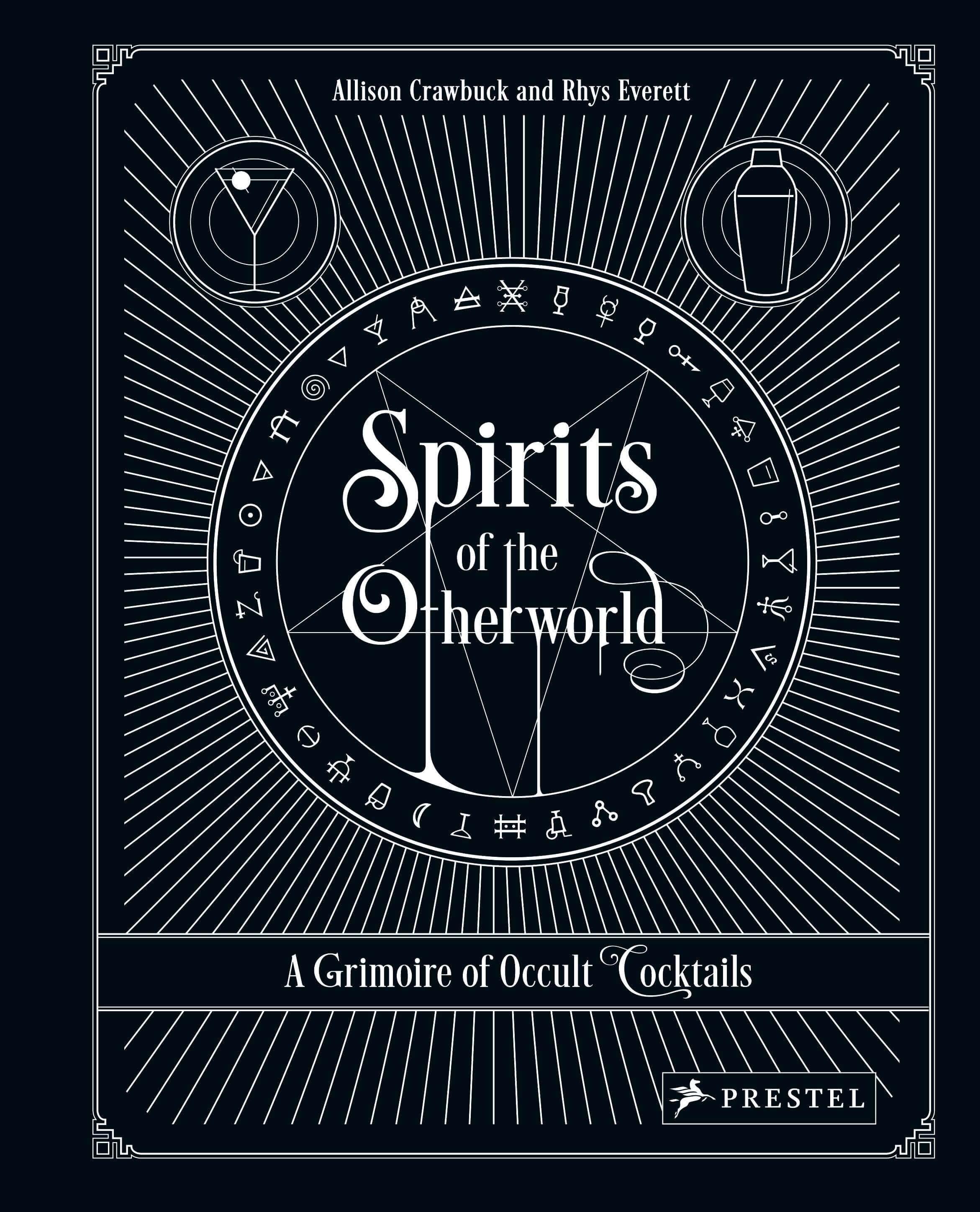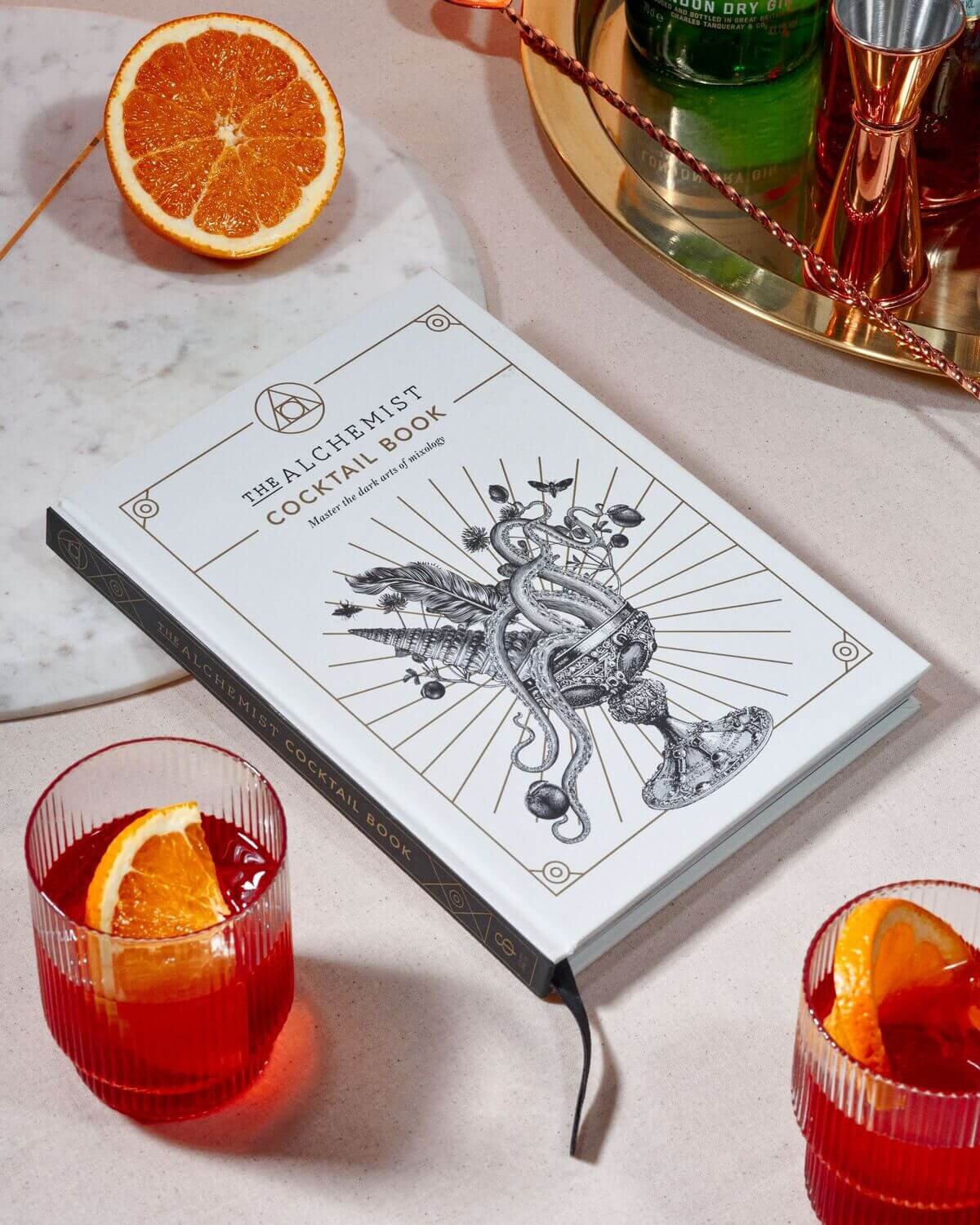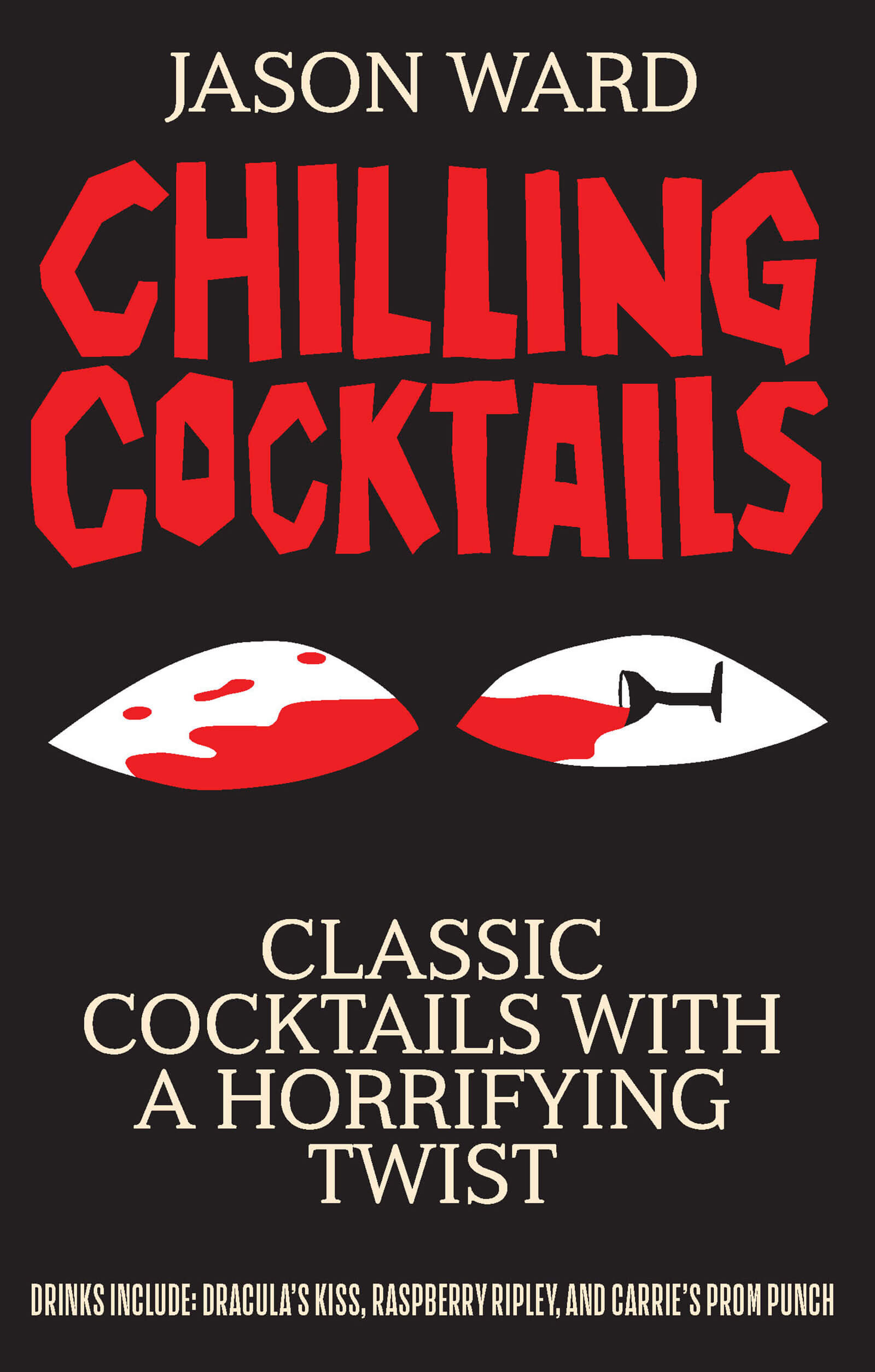6 Great Halloween Cocktail Books to Read Now
It wasn’t too many years ago that the vast majority of cocktail books’ themes were limited to “classic,” tropical,” and “shots,” but now there are recipe books paired with every pop culture phenomenon and popular television series from Harry Potter to contemporary art.
Just in the last couple of years, a number of new recipe books came out themed to America’s best holiday, Halloween. Or rather, they’re themed to the witchcraft and mysticism associated with the holiday, and their release dates tend to be in September or October. They include Potions, Elixirs & Brews, Tarot and Tequila, and WitchCraft Cocktails. This year there are even more books with which to get witchy. Here is a look at six of them.
Spirits of the Otherworld: A Grimoire of Occult Cocktails and Drinking Rituals by Allison Crawbuck and Rhys Everett
The authors of this book are co-owners of The Last Tuesday Society’s cocktail bar that is housed in the Viktor Wynd Museum of Curiosities, Fine Art & Natural History in East London. They are also founders of the Devil’s Botany spirits brand that produces gin and absinthe. The interests of the authors come together in Spirits of the Otherworld, a book of beautifully photographed cocktails inspired by the history of the occult, from ancient Egyptian gods to Satanism in the Belle Epoque.
The book is like an encyclopedia of occult movements with a drink at the end of each entry. The cocktails, like the rest of the content, are thoughtful and unique, and most recipes seem quite rich and full-flavored. There is lots of absinthe used in these drinks as one might expect, but also other less common spirits and liqueurs including arrack, Spanish brandy, and baijiu. The recipes include specific brands for spirits, many of which are not available in the US, so you’ll need to make substitutions if you live outside of London. Many have sub-recipes for tinctures, syrups, and infusions that require advanced preparation, such as chicha Morada, cheddar cheese-washed vodka, and “Greek St John’s wort herbal glycerite tincture.” The recipes are probably best for more advanced home mixologists, or at least adventurous ones willing to take a few risks and guesses. Overall, it’s a very specific and well-executed book that treats both the drinks and the matching thematic topics with care.
The Alchemist Cocktail Book: Master the Dark Arts of Mixology by The Alchemist
This book of recipes comes from The Alchemist cocktail bar group in the UK. There is no pairing of alchemical acts like turning lead into gold with Goldschlager: this is a straight-up recipe book. The bar’s tagline on the website is “theatre served,” and that’s an apt description of the type of drinks in the book: showy- and perhaps good for your Halloween gathering.
The book covers molecular mixology techniques including foams, specification, and infusions including banana vermouth and Zombie mix. The instructions seem pretty clear but not incredibly detailed, so home bartenders should probably be familiar with both the shaker and the kitchen before diving in. Drinks are garnished with printed rice paper, orchid ice balls, meringue, and breakfast cereal, and include ingredients like bubblegum syrup, citric acid, and kale – though thankfully not all in the same drink. The result is a lot of mash-up cocktails like a Rhubarb and Custard Sour, Bananagroni, and Pink Fizz Paloma, plus several wild originals. A final section of booze-free drinks applies the same creative tricks to mocktails. These fun drink formats and garnishes you might choose use in these specific recipes, or take away as inspiration for your own creations.
Chilling Cocktails: Classic Cocktails with a Horrifying Twist by Jason Ward
That the author Jason Ward is a film writer is evident from the first cocktail and movie pairing, a green-colored Japanese Slipper renamed Body Horror in tribute to the 1986 David Cronenberg film The Fly starring Jeff Goldblum. Ward writes that the film's theme of slow grotesque corporeal transformation not only helped it succeed as a tragic love story in addition to a horror one, but was also a reflection the fear of HIV/AIDS of its height.
Apparently, that pairs well with Midori, Cointreau, and lemon juice. Some of the other cocktails in the book are also chosen for their color, like the blood red Vampiro (renamed Dracula's Kiss) for Dracula and a snow-white Snowball (renamed Midnight Sun) for The Thing. Others are in there for the puns, like The Wicker Man(hattan), Let the Right Rum In, and Scream De Menthe.
Most of the cocktails are familiar classics including the Corpse Reviver No 2, Tequila Sunrise, and Jungle Bird, but there are also a few wildcards including the Black Jack (cherry brandy, cognac, cold coffee, simple syrup), and Aunt Roberta (brandy, vodka, absinthe, gin, and blackberry liqueur) that sound a bit... intense. So you may or may not be in it for all of the cocktails, but the movie commentary is interesting enough to keep you reading, and the drink illustrations (no photographs here) are extremely fun mashups of monsters and cocktails that will keep you turning pages.
Mixology and Murder: Inspired by Infamous Serial Killers, Cold Cases, Cults, and Other Disturbing True Crime Stories by Kierra Sondereker
Rather than with fictional movie crimes, Mixology and Murder pairs stories of true crime with cocktails. The mostly well-known crimes are described in a few paragraphs, and include those committed by serial killers, cult leaders, kidnappers, and con men. The Sidecar becomes The Volkswagen (for murderer Ted Bundy's vehicle), The White Lady becomes the Whitechapel Ladies for Jack the Ripper, the Blood and Sand becomes the Blood and Glove for the OJ Simpson trial evidence, and there is a Helter Skelter Sangria for Charles Manson's cult. It's true crime's greatest hits.
The cocktail recipes themselves are solid; most are simple classics, and several others are simple spins that add a splash of new flavor like elderflower liqueur, ginger beer, or blood orange juice to a familiar format. There are 75 drinks in total (with an accompanying photo), and the book could function as a perfectly respectable cocktail recipe book, as long as you're fine with each one being connected to a not-so-delicious crime.
Moon, Magic, Mixology: From Lunar Love Spell Sangria to the Solar Eclipse Sour, 70 Celestial Drinks Infused with Cosmic Power by Julia Halina Hadas
From the author of WitchCraft Cocktails comes this moon-centric book due out just after Halloween on November 9 that still seems thematically worthy of inclusion in this round up. It is a particularly thorough exploration of its topic, with so much background on the connection of cocktails to the cosmos that the first drink recipe isn’t printed until page 111. For example, we learn that "grapefruit and rosemary can elevate a lunar purification spell during the banishing waning moon" and that ice cubes can be made from water left out to "charge" in the moonlight for use in some recipes. An introduction to the base spirits also includes their "energetic potential" for things like purification spells. The author also covers the connections of the astrological signs and the moon, and the best types of magical efforts to be carried out during those periods; the use of a whole range of crystals; and the ritual use of individual ingredients like basil and watermelon. It is an impressive work, whether you choose to embrace its teachings or merely marvel at them.
For the most part, the cocktails take the form of recognizable classics that are amplified with berries, flowers, spices, and herbs to make aromatic variations thereof. A Mint Julep has added sparkling wine, rosemary, and bitters to the usual recipe; a Blood and Sand that calls for blood orange juice instead of the regular OJ, and balsamic shrub and red wine instead of Cherry Heering and vermouth. A New York Sour has added blueberries and a smoked lemon slice. Instructions on assembling the drinks can include lines like, "In a bucket glass, muddle strawberry, 1 rosemary sprig, nutmeg, rose water, and maple syrup together, visualizing any problems being stamped out and harmony instead taking over," or "Shake, envisioning the light of the moon waking up the dead."
Witch's Brew: Magickal Cocktails to Raise the Spirits By Shawn Engel and Steven Nichols
Witch’s Brew is a little book of "eminently sippable drink recipes to imbibe for witchy purposes." The cocktails are divided into sections including The Alchemist's Tools, Spell Casting, The Tarot, and Color Magick, with a recipe dedicated to each sub-topic like The Maiden, The Mother, and The Crone in The Goddess section. Each listing inspires a choice of ingredients from the theme (lemon and ginger in the Purifying Tonic, pink champagne and rose for the Love Potion #9, for example) and a cocktail is built around those ingredients.
With each drink's description, there are instructions for reflection and naming intents. For example, various drinks come with directions to breathe deeply and ground yourself while stirring, imagine negative energy dissolving while drinking, and journaling and list-making on specific themes and goals. There is some thematic overlap in intention-based mixology to Moon, Magic, Mixology, but this one is a quick and cute version. And the cocktails are quite different.
The drinks contain a wide range of often-fresh ingredients from beet juice, kiwi, carrot juice and honey/turmeric syrup. There is a Penicillin variation with nori-infused scotch, a cinnamon-infused tequila Old Fashioned, and a Salty Dog with added blueberries. Some stray a bit further afield from the classics, and many involve muddling herbs and fresh fruit as the first step. They look good. A particularly nice specialty of this book is that every cocktail includes a recipe for non-alcoholic variation, often with tea as the replacement for the base spirit.






